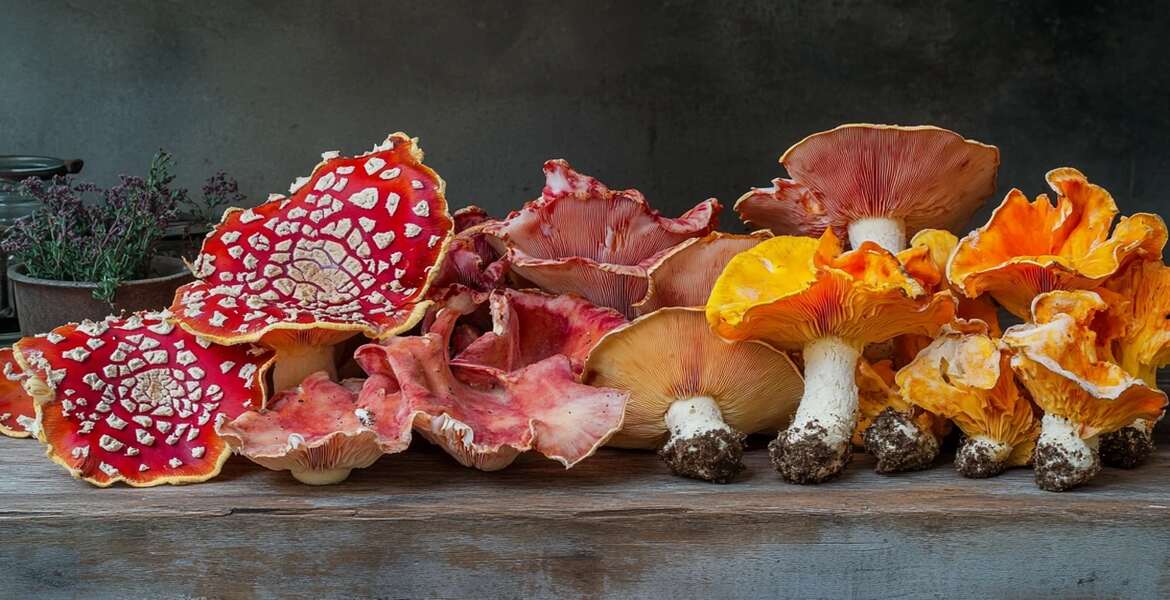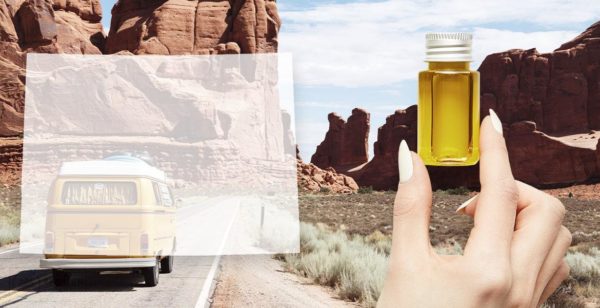What Are the Most Popular Amanita Muscaria Variations?

Also known as the fly agaric, Amanita muscaria is among the world’s most famous mushrooms. It is widely used in popular culture, perhaps most memorably in the Mario video game franchise created by Nintendo.
Humankind has used amanita for centuries, particularly indigenous peoples in Northern Europe, Siberia, and North America. The mushroom has become more widely used recently, and few people realize several recognized variations of Amanita muscaria exist. Each possesses distinct characteristics, although they retain the most relevant compounds, muscimol and ibotenic acid.
This article highlights the best-known types of amanita mushrooms, including their appearance and key features.
Amanita Muscaria Var. Muscaria
This is the best-known variety, the one that’s the subject of countless popular culture references. Amanita muscaria var. muscaria boasts the legendary bright red cap of lore along with distinctive white flecks. The convex cap can range between 8 cm and 20 cm in diameter.
The gills underneath the cap are white or cream-colored, packed densely together, and emerge from the middle of the cap. This variant is typically found in many parts of the world, including Asia, Europe, North America, and certain parts of other areas with forested habitats.
Like all Amanita muscaria variants, this mushroom contains ibotenic acid and muscimol.
Amanita Muscaria Var. Guessowii
You should notice an orange-red, peach, or reddish-brown cap on the Amanita muscaria var. guessowii mushroom. This is one way to differentiate it from the more famous Amanita muscaria var. muscaria variation. That being said, this version also has pretty white patches on the cap. These are remnants of the universal veil that covers the mushroom while it’s young.
This mushroom’s gills have a white or cream-colored hue, and there’s potentially a ring-like structure close to the top of the stem. Generally, you can find Amanita muscaria var. guessowii in parts of North America with mixed and coniferous forests. It is typically considered North America’s equivalent of the Amanita muscaria var. muscaria mushroom, which grows in far more regions.
Amanita Muscaria Var. Formosa
Fans of Amanita muscaria var. formosa will recognize its yellow to orange-yellow cap. Once again, this is one of the best ways to distinguish it from other mushrooms on this page. Learning to spot the different colors is especially important since this variation has the standard white spots on the cap.
Like Amanita muscaria var. guessowii, you will primarily find this mushroom in North America.
Amanita Muscaria Var. Aureola
The Amanita muscaria var. aureola has a yellow to orange cap, and at a certain time during its growth, it may resemble a yellow bell pepper! You may spot some white specks on the cap, although the spots aren’t always as prominent as on other variants.
If you’re concerned about differentiating it from other subspecies, it helps to note that you’ll usually only find it in parts of Asia and Europe. Overall, the Amanita muscaria var. aureola is less widely distributed than other variations.
Amanita Muscaria Var. Regalis
This lesser-known variant is easier to spot than other Amanita muscaria subspecies thanks to its reddish-brown to brown cap. It does have the much-loved white patches that help make it an attractive mushroom.
You will do well to encounter an Amanita muscaria var. regalis because it is relatively difficult to find. Indeed, you’ll generally only find it in certain parts of Europe.
Amanita Muscaria Var. Alba
This mushroom has a unique appearance thanks to its white-colored cap with tan or white warts. Indeed, one might argue that it resembles a slightly overcooked blancmange!
Amanita muscaria var. alba’s look is due to the classic version’s lack of red pigment. This is likely due to albefaction, a process known to several amanita species. A genetic mutation is suggested to cause this phenomenon, though no clearly defined explanation is provided.
While the Amanita muscaria var. alba grows in North America and Europe, it is rare.
Amanita Muscaria Var. Flavivolvata
Last but certainly not least is the Amanita muscaria var. flavivolvata mushroom. At first glance, you may mistake it for the classic variant due to its red cap. However, its well-developed universal veil is initially yellow before turning white as the color fades. You may also notice that this variant is larger than Amanita muscaria var. muscaria.
If you want to see this mushroom, check out North America’s Pacific Northwest and Rocky Mountains regions.
Key Features of Amanita Muscaria Mushrooms
When looking for Amanita muscaria, you should know its main characteristics, many of which have been mentioned while describing the different variants. However, a brief rundown may prove useful if you’re unfamiliar with this mushroom.
Cap
The famous Amanita muscaria caps come in various colors, including red, yellow, orange, brown, and white. They often feature white warts, flecks, or patches on the surface. Moreover, the caps are generally round to convex.
Gills
The gills are beneath the cap. They are usually white or cream and not attached to the stem. In Amanita muscaria, the gills are packed tightly and come out of the cap’s center.
Stem
This mushroom has a pale or white stem (or stipe) that may include remnants of the universal veil. Sometimes, the veil leaves a ring-like structure near the stem’s top.
Universal Veil
This veil surrounds the whole fruiting body during the early growth stage. When the mushroom grows, the veil tends to break. The result is the patches, flecks, or warts you see on the cap, also known as the remnants. These remnants also end up on the stem.
Volva
This is a sac-like structure at the bottom of the stem. It is the remnant of the veil and is a great way to tell the difference between amanita species.
Spore Print
This is the powdery deposit you get when you let the spores of the mushroom’s fruiting body fall on a surface beneath it. In Amanita muscaria, the spore print is either pale cream or white.
Compounds
It was assumed that muscarine was responsible for most of Amanita muscaria’s effects for a long time. However, we now know that ibotenic acid is abundant in the raw version of the mushroom. You can turn this into muscimol through decarboxylation.
Habitat
Amanita muscaria grows mainly in broadleaf coniferous forests. It is known for forming symbiotic relationships with certain tree species, including pine, spruce, oak, fir, cedar, and birch.
Mycorrhizal Association
Amanita muscaria develops due to “mycorrhizal associations” with tree roots. In simple terms, this means the mushrooms have a mutually beneficial relationship with trees, which includes the exchange of nutrients.
Seasonality
If you’re looking for Amanita muscaria, your best bet is to wait until it’s near the end of summer or the beginning of autumn. However, this depends on where you live and its environmental conditions. As we’ve explored above, certain mushroom variants only grow in specific regions.
The Last Word on the Different Variations of Amanita Muscaria
The next time you read about this mushroom, remember it has several variants. Most people associate Amanita muscaria with its distinctive red cap and white dots. However, this only relates to the Amanita muscaria var. muscaria subspecies. Several others have unique traits, such as cap color, distribution of flecks, and preferred habitat.
While many versions of this mushroom grow in North America, some on this list don’t. This may prove disappointing to some, but you can always try our amanita gummies instead!









